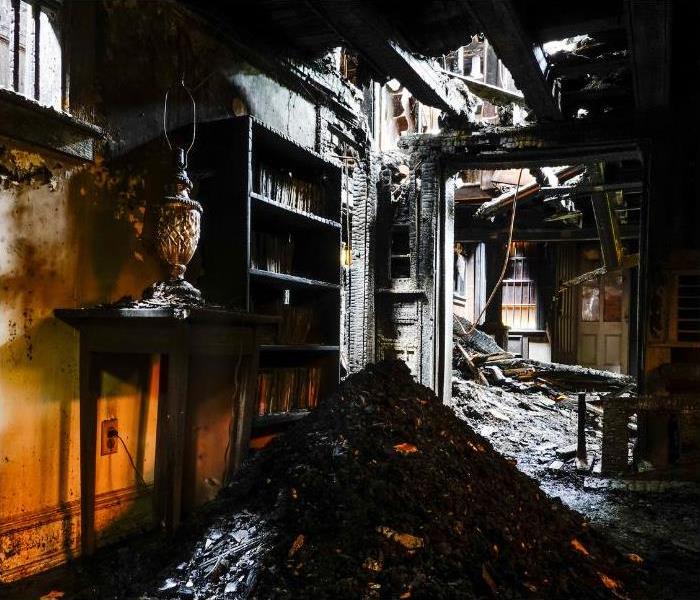What are the Types of Fire? Understanding Smoke & Soot
11/12/2021 (Permalink)
How does fire damage your home in Pulaski or Columbia? Depending on what kind of materials burn, the short-term and long-term effects of fire can change significantly. After a fire with incomplete combustion, soot is often left over. To get your home back to normal after a fire, you need to remove the soot from surfaces, especially from non-heat resistant surfaces, such as walls and windows, but also from other areas that have been contaminated by smoke or soot.
Knowing what kinds of soot are left over from a fire will help you clean more effectively. This is because protein residues, natural substance residues, and synthetic residues behave and are cleaned differently from each other. Understanding which type is present before a fire restoration, will help shed light on the cleaning process to follow.
The Science Behind Smoke & Soot
Smoke and soot particles occur when there is incomplete combustion in a fire. Combustion is a process where fuel, oxygen, and heat combine to rapidly oxidize substances. That oxidization process leaves soot particles. When you burn propane from a gas tank, there is usually enough oxygen around the fire to produce a perfectly clean burn with almost no soot residue. However, if you reduce the amount of oxygen available, more and more soot is left over due to this incomplete combustion. Besides soot particles, volatile organic compounds in the form of gasses are often left over, many of which have been shown to be carcinogenic.
Natural Substance Soot & Smoke
Natural Substance Residues are usually left over when paper or wood is burned. This kind of residue tends to be grey to black and has a dry, powder-like texture. This type of residue, when pure, tends to be quick to clean with vacuums and a combination of wet and dry cleaning techniques. These are usually the easiest kinds of soot residues to clean when compared to the other 2 main types of soot particles after a fire.
Synthetic Soot & Smoke
This kind of soot residue, sometimes described as oily soot or oily smoke, produces a thick, heavy black substance that tends to smear when touched. In some cases, it can even appear almost like a black spider web. When left undisturbed on a surface, it can sometimes be vacuumed away, but if touched, it will tend to smudge and become more difficult to clean. Plastics, and synthetic materials are the usual culprits for this kind of soot residue.
Protein Soot & Smoke
Protein residue occurs when meat, fish, beans, or other protein-containing substances are overcooked or burned. This kind of soot appears yellow to brown, and feels greasy and sticky. Water-based cleaning solutions work well with this kind of soot as long as the surface it is on can be wet cleaned.
How Do You Clean After a Fire?
Smoke and soot can cause secondary damage to materials when left there for long, and improper cleaning methods can cause more damage to affected materials. This is why when any fire has affected your home or property, it is usually best to call in professionals like SERVPRO of Maury / Giles to make sure your property is restored back "Like it never even happened."
Call us today at (931) 388-4248 for all of your fire restoration and fire cleaning needs.



 24/7 Emergency Service
24/7 Emergency Service
